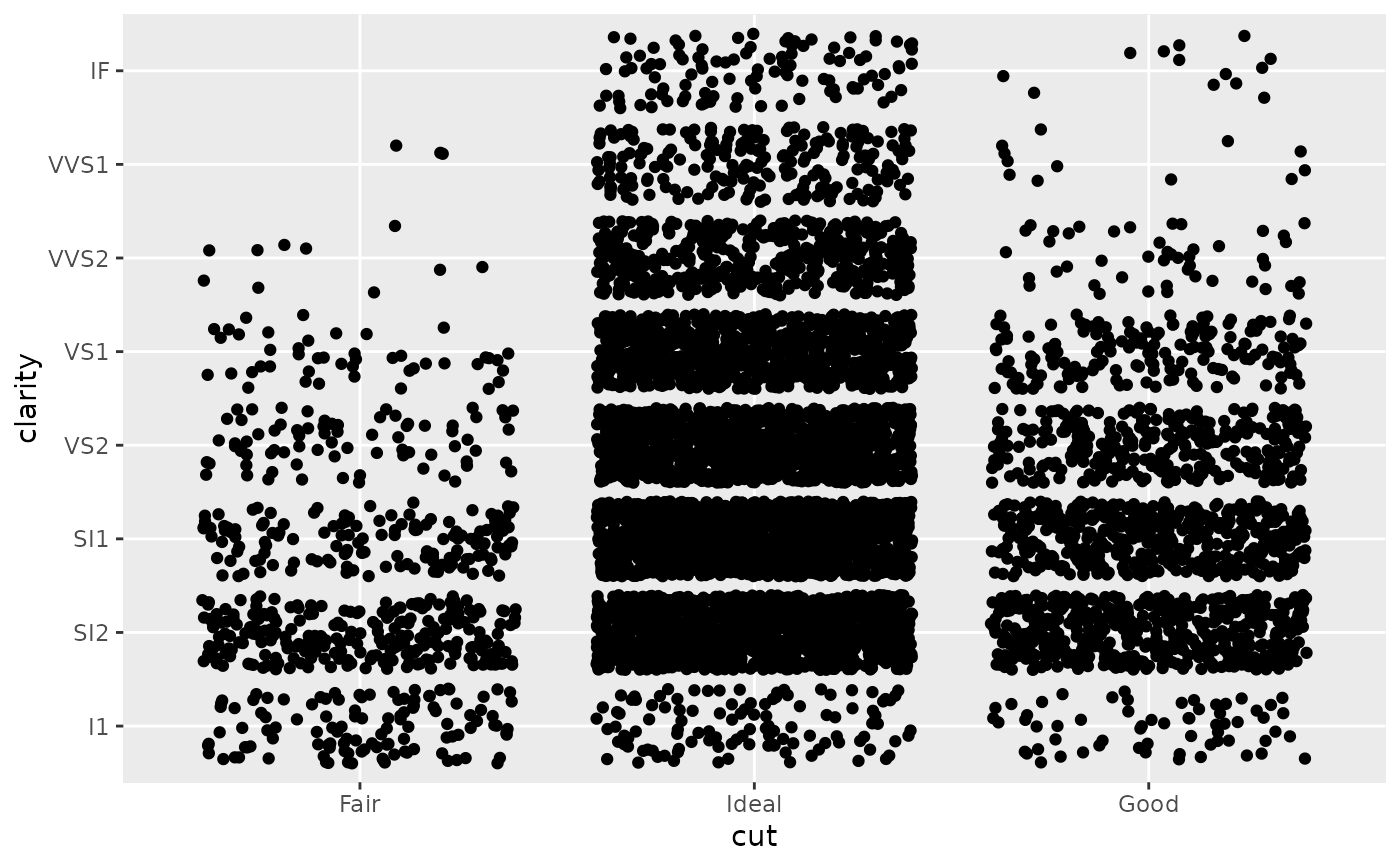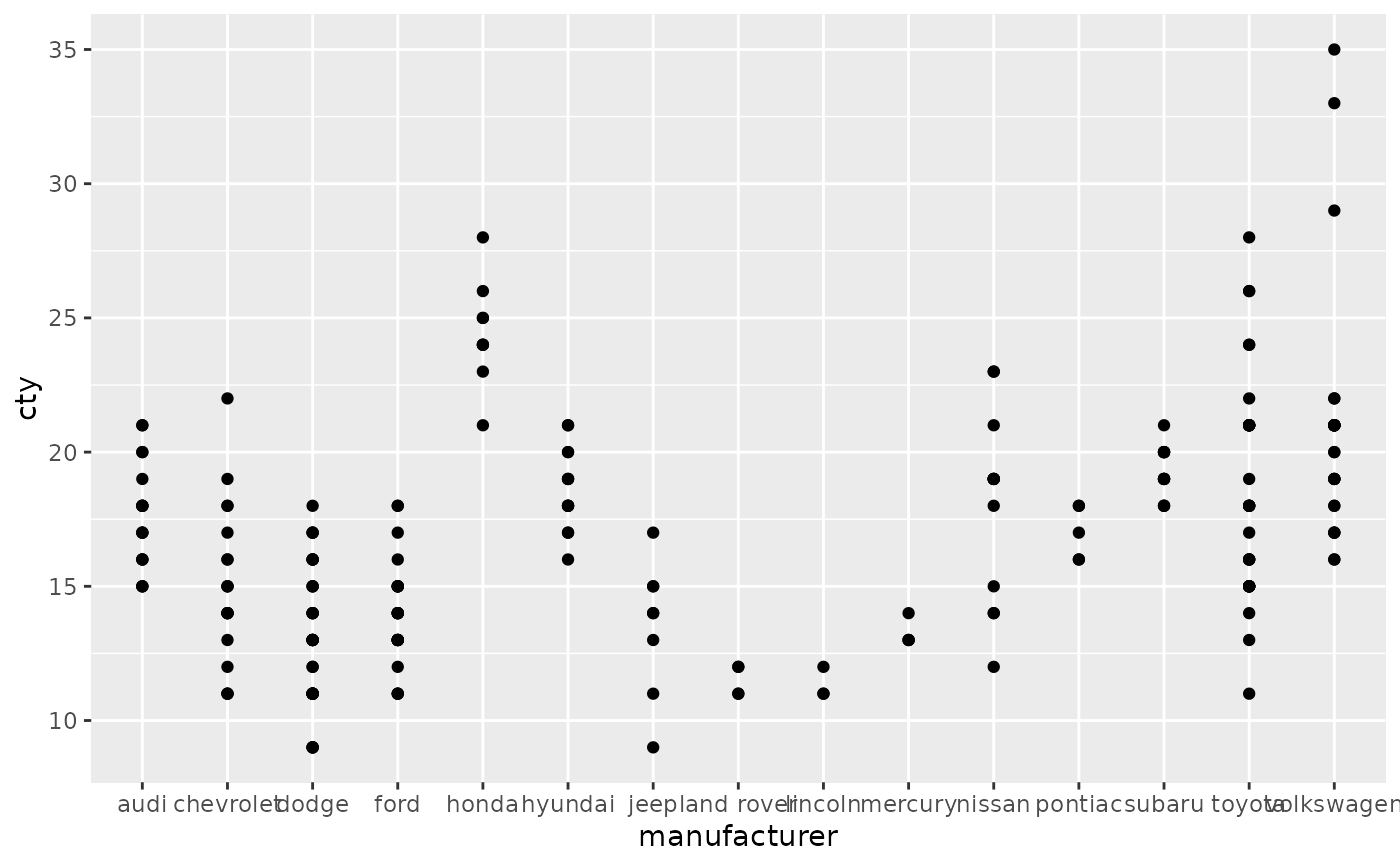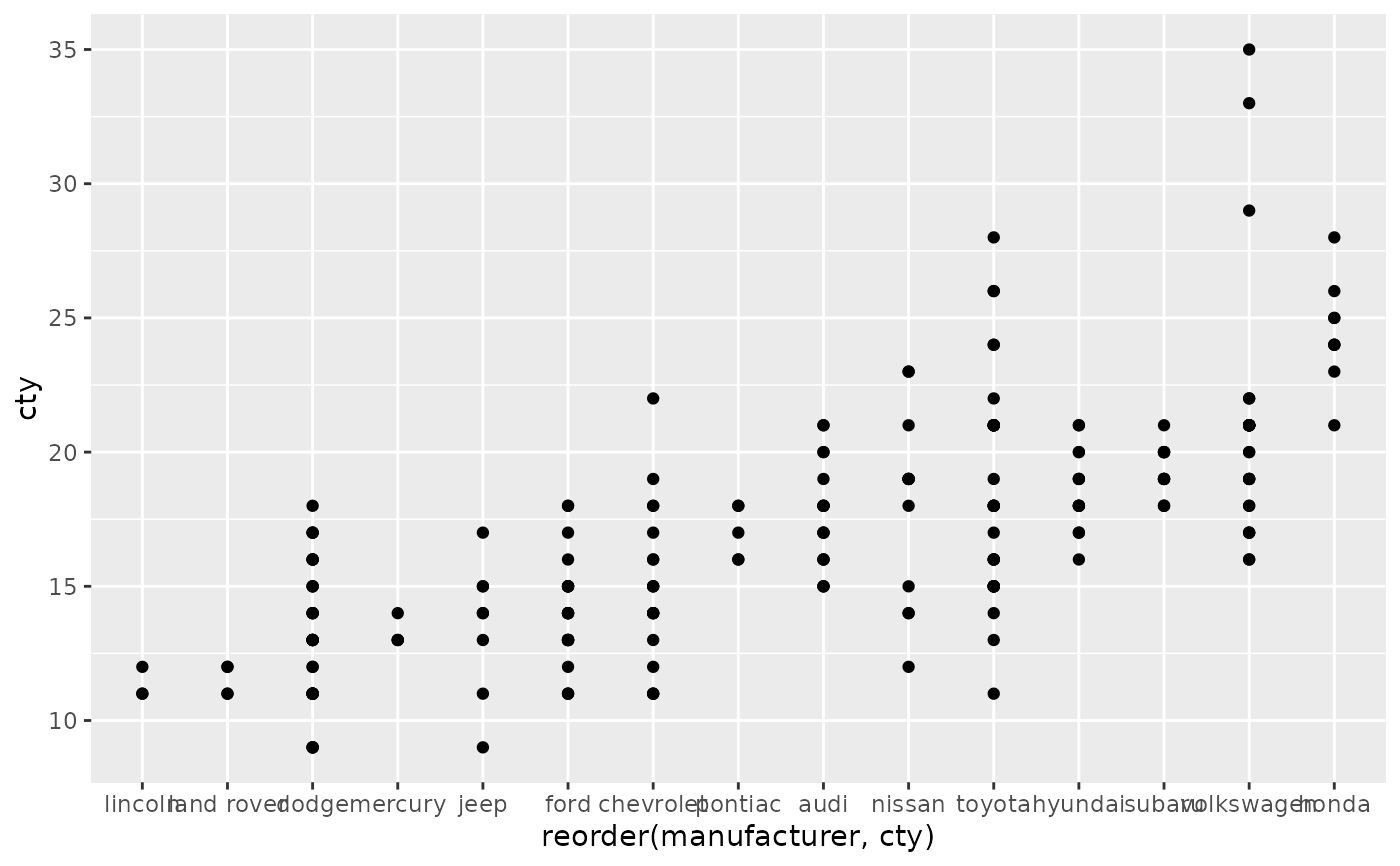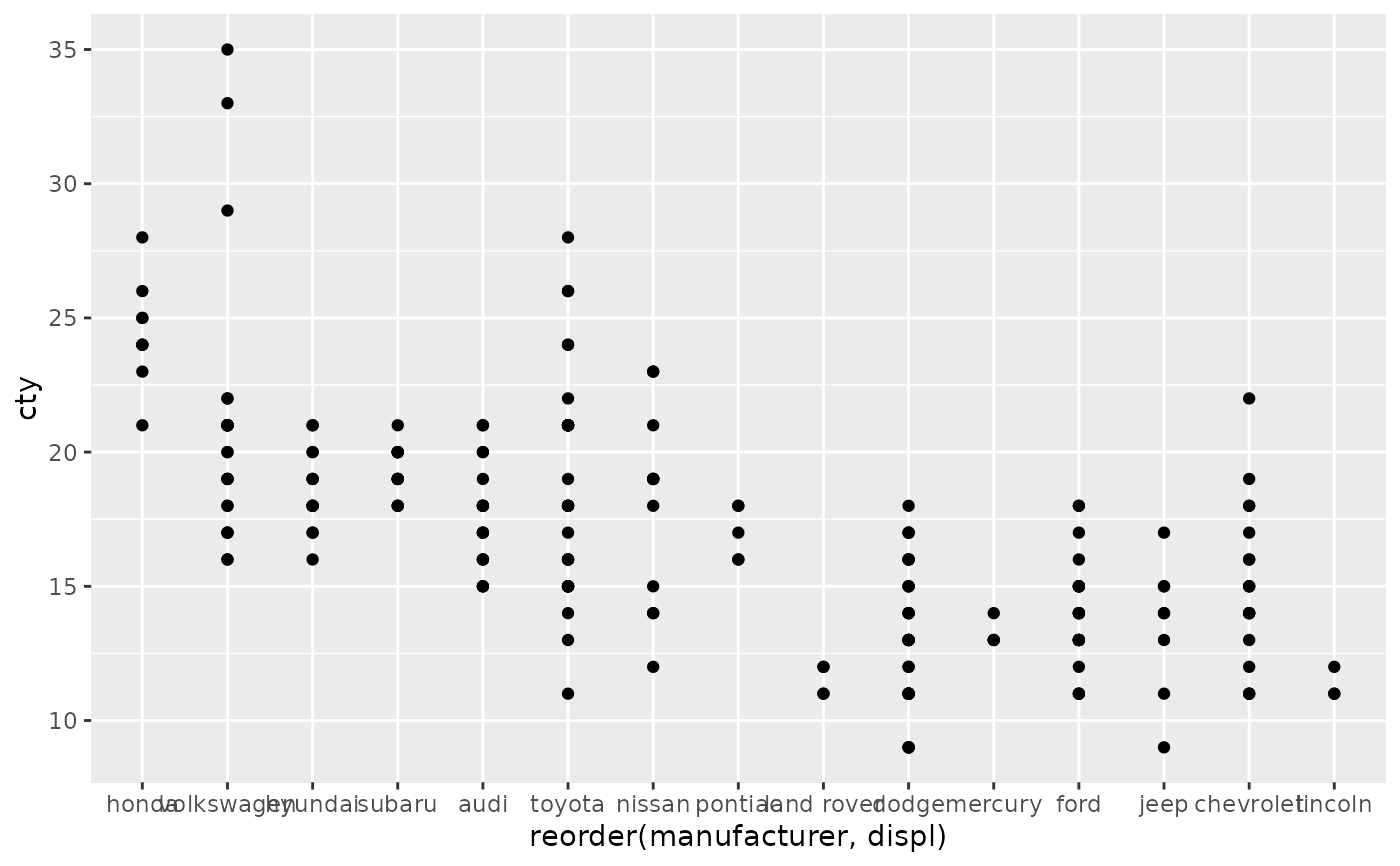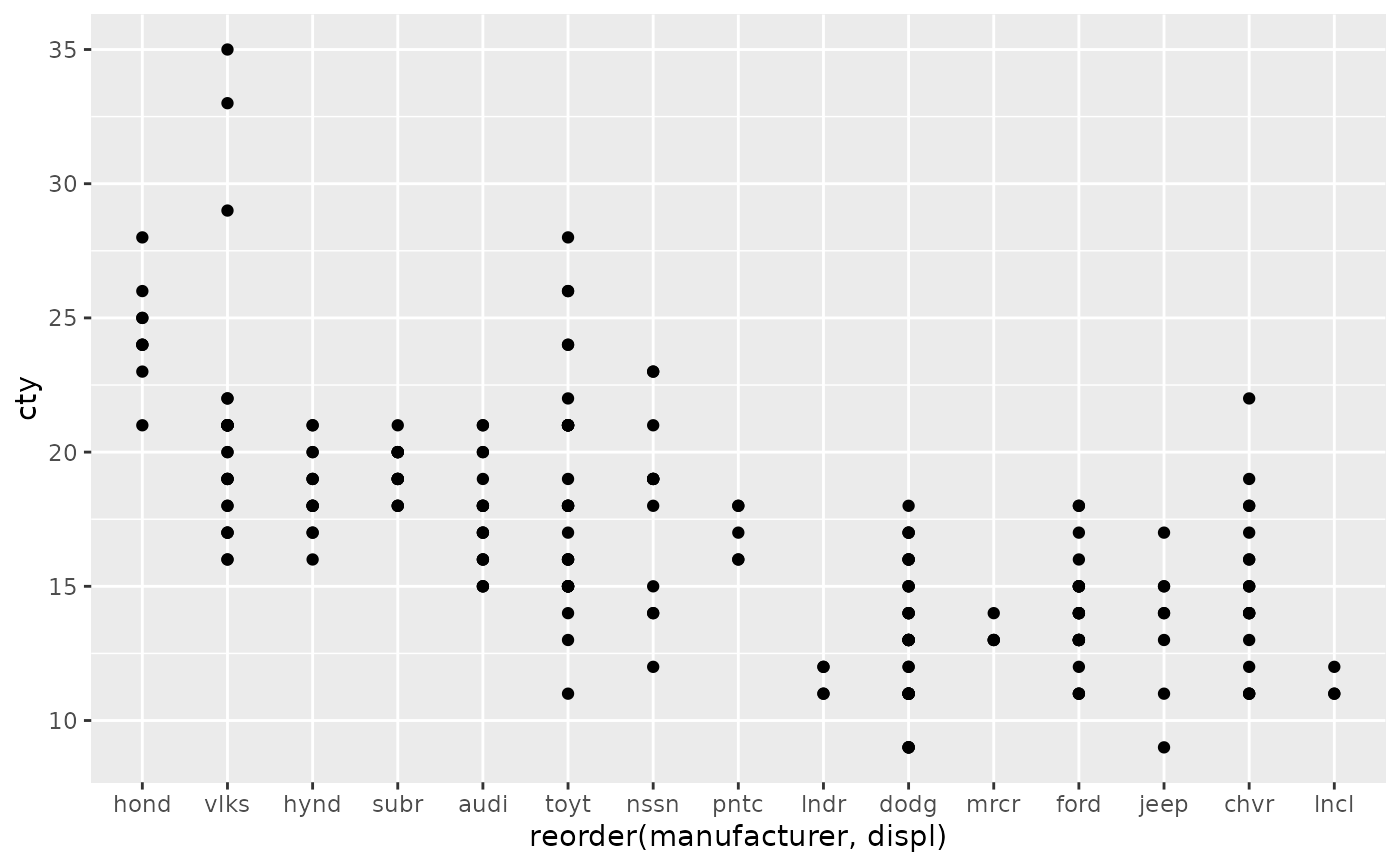scale_x_discrete() and scale_y_discrete() are used to set the values for
discrete x and y scale aesthetics. For simple manipulation of scale labels
and limits, you may wish to use labs() and lims() instead.
scale_x_discrete(..., expand = waiver(), guide = waiver(), position = "bottom") scale_y_discrete(..., expand = waiver(), guide = waiver(), position = "left")
Arguments
| ... | Arguments passed on to
|
|---|---|
| expand | For position scales, a vector of range expansion constants used to add some
padding around the data to ensure that they are placed some distance
away from the axes. Use the convenience function |
| guide | A function used to create a guide or its name. See
|
| position | For position scales, The position of the axis.
|
Details
You can use continuous positions even with a discrete position scale - this allows you (e.g.) to place labels between bars in a bar chart. Continuous positions are numeric values starting at one for the first level, and increasing by one for each level (i.e. the labels are placed at integer positions). This is what allows jittering to work.
See also
Other position scales:
scale_x_binned(),
scale_x_continuous(),
scale_x_date()
Examples
# \donttest{ # The discrete position scale is added automatically whenever you # have a discrete position. (d <- ggplot(subset(diamonds, carat > 1), aes(cut, clarity)) + geom_jitter())d + scale_x_discrete("Cut")d + scale_x_discrete( "Cut", labels = c( "Fair" = "F", "Good" = "G", "Very Good" = "VG", "Perfect" = "P", "Ideal" = "I" ) )# Use limits to adjust the which levels (and in what order) # are displayed d + scale_x_discrete(limits = c("Fair","Ideal"))#> Warning: Removed 11189 rows containing missing values (geom_point).#> Warning: Removed 9610 rows containing missing values (geom_point).#> Warning: Removed 16770 rows containing missing values (geom_point).# See ?reorder to reorder based on the values of another variable ggplot(mpg, aes(manufacturer, cty)) + geom_point()# Use abbreviate as a formatter to reduce long names ggplot(mpg, aes(reorder(manufacturer, displ), cty)) + geom_point() + scale_x_discrete(labels = abbreviate)# }





